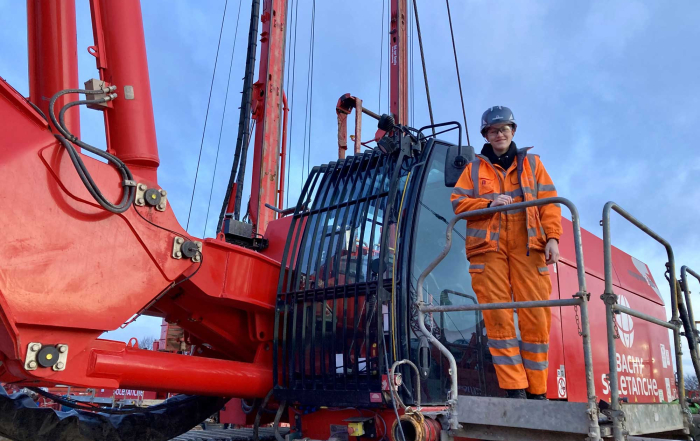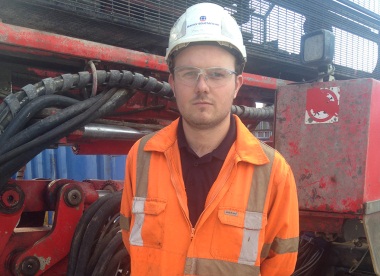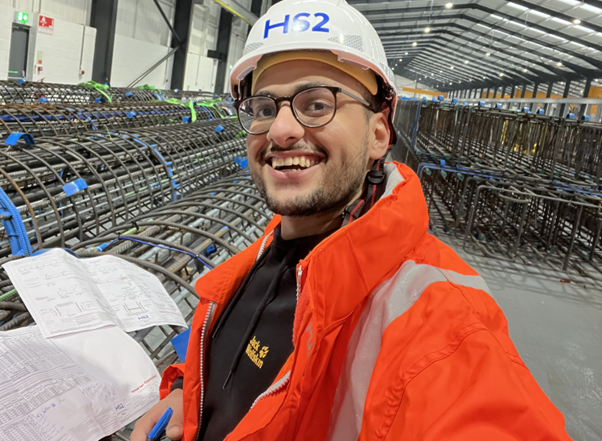Just three years into his career, Bachy Soletanche Design Engineer Ahmed Saadeldein has already contributed to the design and delivery of several major infrastructure projects across the Middle East and the UK. In this Insider Update, Ahmed offers a fascinating insight into the world of geotechnical design, whilst sharing his recent career achievements and how his hometown of Cairo inspired his love of engineering.
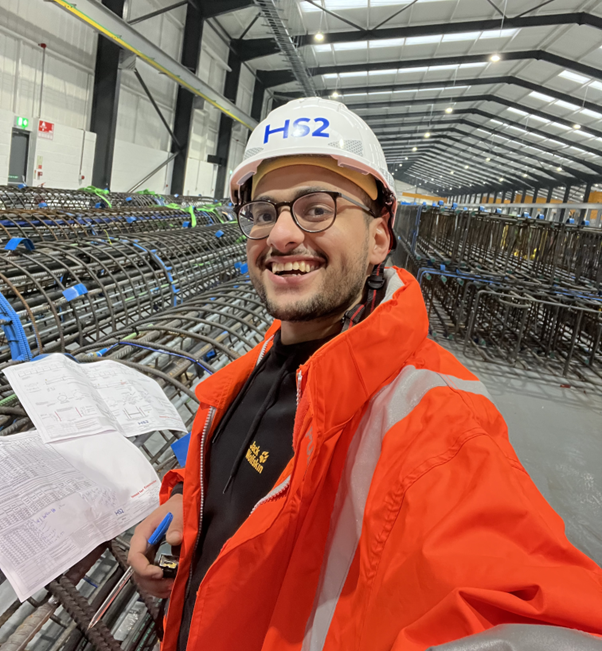
What attracted you to a career in engineering?
My journey into engineering began in the historic streets of Cairo, a city where ancient ingenuity and modern challenges intersect. Growing up, I was constantly reminded of the incredible engineering masterpieces of the ancient Egyptians. Their pyramids, temples and tunnelling systems are timeless testaments to their skill and innovation. This deep-rooted legacy of engineering excellence in my homeland sparked a curiosity within me.
My fascination with ground engineering stems from my commutes to school on the Cairo Metro – I was always amazed at how these tunnels were built underneath the Nile. It is a contemporary expression of ancient wisdom that seeks to work with, not against, the natural environment. What I love about engineering is that it allows me to combine the wisdom of these pre-historic practices with modern technology, creating solutions that are sustainable, efficient and firmly entrenched in historic tradition.
Tell me a bit about your education and career history.
My journey into the industry began with a comprehensive five-year civil engineering degree programme, which was split between the German University in Cairo and the Technical University of Munich.
The pinnacle of my educational experience was completing my thesis at the Technical University of Munich, which focused on predicting the impact of vibro stone column positioning on soil improvement. A key aspect of my thesis was analysing cone penetration test (CPT) logs from pre and post installation of vibro stone columns, using MATLAB and Python. This analysis was based on a case study in Abu Dhabi. In addition to this, I conducted several zone load tests and utilised computational software to verify these results and draw a reliable conclusion from my research.
Following my graduation in mid-2020, I’ve been fortunate to engage in several major infrastructure projects.
Here are the highlights of my first three years as a geotechnical engineer:
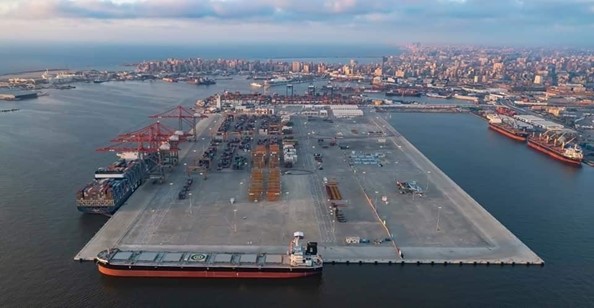
Alexandria Seaport Expansion, Egypt
I joined EDECS Egypt as a geotechnical site engineer. In this role, I was deeply involved in all geotechnical phases of the Alexandria Seaport Expansion project and I gained an understanding of numerous construction methods. My work included dredging, backfilling and reclamation, soil improvement and the construction of deep foundations such as diaphragm walls, bored piles and barrettes.
Being on site managing three hydromills and two piling rigs whilst working against the clock within a very limited space was challenging for me. However, it was here that my passion for ground engineering was really solidified. It was incredibly rewarding to help construct such a major piece of infrastructure.
HS2
In 2022, I joined Bachy Soletanche as a geotechnical design engineer in the major projects department. My first project was HS2’s N1/N2 lots in the West Midlands. My role involved liaising with the principal contractor and project engineer to deliver various types of deep foundation, including diaphragm walls, CFA, LDA, secant and contiguous walls. My duties also extended to producing detailed construction drawings for all reinforcement cages, including their temporary works inspections, and supporting the design of several reaction piles. Alongside this, I supported the site teams in understanding different geological conditions and working methodologies during the pre-construction phase.
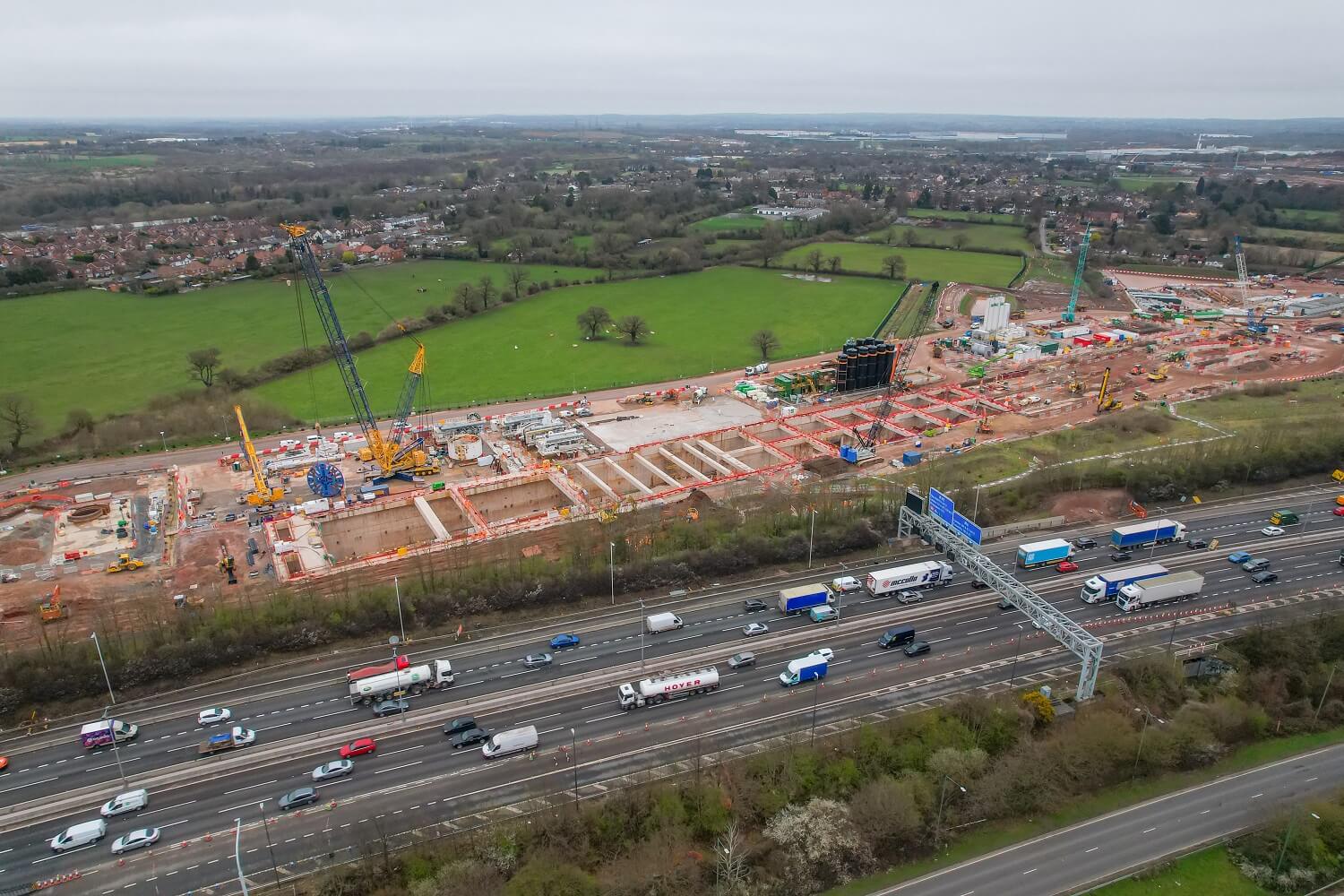
Al-Lith Dam, Saudi Arabia
After my work on Alexandria Seaport came to an end, I joined Dar Group in Cairo as a junior geotechnical design engineer, contributing to the design of several infrastructure projects across the Middle East. A key project I worked on was the construction of a rockfill dam, aimed at providing flood protection to a city in western Saudi Arabia.
My responsibilities included supporting the senior designer in delivering comprehensive design packages. This involved checking the global stability of the 40-metre-high rockfill dam using advanced computational modelling software, as well as designing permeation grouting for the dam abutment, which was needed to improve stability and manage seepage. I also assisted the design team in preparing the design intent drawings for an underpinned diaphragm cut-off wall.
Bachy Soletanche Core Business
In 2023, I then transferred to Bachy Soletanche’s core business design team as a geotechnical design engineer. I am responsible for the production of design packages for deep foundations, retaining walls and shafts to assist the pre-construction team throughout the tendering process.
Working closely with highly-experienced engineers in the design team has been a dream come true. Their eagerness to develop my skills and support my professional development through knowledge sharing has been incredibly rewarding. Their mentorship and guidance are invaluable as I continue to grow and contribute to the team.
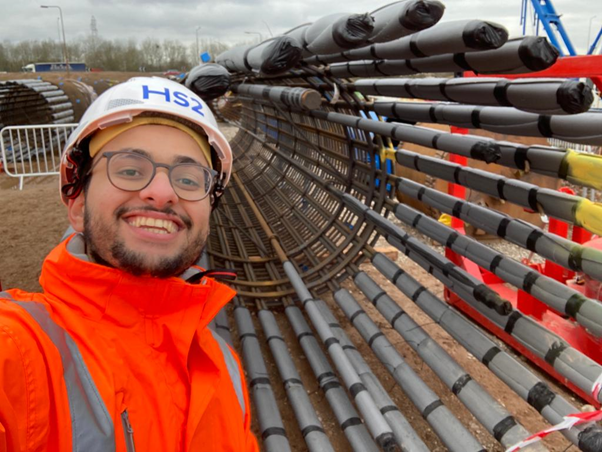
What is your favourite structure to design?
My favourite structures to design, especially in my current role at Bachy Soletanche, are retaining walls and shafts. The appeal of these structures lies in their complexity, both in terms of design and their various stages of construction. What fascinates me most is the process of determining the most appropriate construction method, such as the secant piling and diaphragm wall panelling sequences. From soil conditions to environmental considerations, these structures offer unique challenges that make for a dynamic design process.
What is the most challenging project that you have worked on?
Undoubtedly, the most challenging project I have worked on so far has been HS2 N1/N2. This project pushed the boundaries of my expertise, for example, designing secant wing walls comprising deep, heavily-reinforced piles with full segmental casing. The complexity and intensity of the works were significant and I encountered various obstacles that tested my problem-solving skills and technical knowledge.
A standout challenge at HS2 was designing and monitoring bi-directional tests using Osterberg cells (O-cells). This task was not only technically demanding but also a rare opportunity in geotechnical engineering. My role in designing the O-cell reinforcement cages and periodic site visits provided invaluable insights into these specialised tests.
How does sustainability fit into your role as a Design Engineer?
Sustainability is a fundamental consideration, particularly during the early stages of project tendering. My involvement often includes proposing alternative solutions. This involves suggesting changes to construction methods, reducing cement content in concrete through the use of binders and optimising reinforcement to minimise waste. I also focus on introducing innovative, sustainable technologies. Furthermore, by standardising pile arrangements, we can reduce programme, thereby cutting carbon through improving efficiency.
You recently won the GE Early Careers Challenge, what did this involve?
In August 2023, I was selected for the Early Careers Challenge launched by Ground Engineering and Mott MacDonald, which saw me competing against 19 early career professionals from diverse industry backgrounds. The challenge involved designing an eight-metre embankment on soft soils for a UK highway, with an emphasis on sustainable solutions and digital tools to achieve long-term environmental goals.
Working in a team of five, including members from various sectors such as consulting and education, we thoroughly analysed environmental constraints and construction risks, whilst conducting extensive research on innovative technologies and sustainable methods for the project.
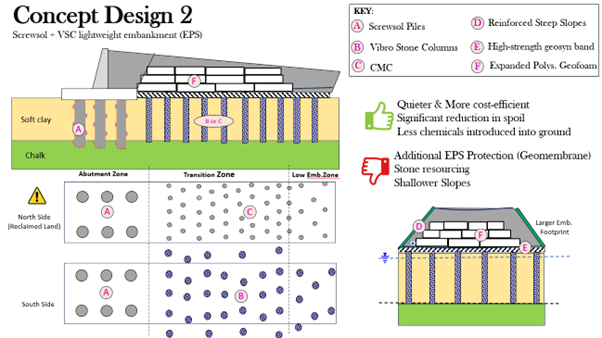
GE Early Careers Challenge – Concept Design 2
What was your solution and what did you have to consider?
We developed three concept designs that integrated bridge foundations, embankment construction and soil improvement techniques. Each design was considered after studying relevant case studies and evaluating their environmental and technical impacts. This included exploring various piling techniques for bridge foundations, assessing soil improvement methods, and identifying sustainable materials like chalk, expanded geofoam and shredded tyre bales for constructing the embankment.
We used several carbon calculators (including those from the European Federation of Foundation Contractors and the Department for Infrastructure) and a Power BI dashboard to evaluate the environmental impact of each concept design. We also explored alternatives such as dualling the existing road and proposing another route. At the same time, we considered factors such as cost, time, technical compliance and design life.
We concluded that Concept Design 2 was the optimal solution for the proposed route. We opted for a combination of Screwsol® piles and vibro stone columns to support an embankment comprising expanded polystyrene and geofoam. However, we also suggested that if alternative routes were permitted, dualling the existing road would provide an even faster, more cost efficient and more sustainable solution.
What did you gain from the experience?
Participating in the Early Careers Challenge was an invaluable learning experience. It not only provided a unique platform to test my geotechnical capabilities but also allowed me to collaborate with talented individuals as we exchanged ideas and expertise, enriching our collective knowledge. Further to this, the challenge has ignited my passion for creating a better future through sustainable engineering.
What are your aspirations for the future?
With the support of my team, I am currently working towards my ICE chartership, which will mark an important next step in my professional development. As I look towards the future, I am eager to continue progressing in geotechnical engineering, particularly in terms of contributing to innovative and sustainable solutions. Wherever my career takes me, I aspire to make a meaningful impact on people and the planet.
Tell me something most people don’t know about you?
I have a deep passion for travel and new challenges. So far, I have visited 25 different countries, adding a new destination each year. A little-known fact about me is that I once swam with humpback whales and orcas in freezing waters off the northern coast of Norway, before catching a glimpse of the famed northern lights. I am currently planning a unique trip to Kazakhstan for a five-day horseback adventure. It’s these kinds of experiences that offer a refreshing contrast to my professional life.
